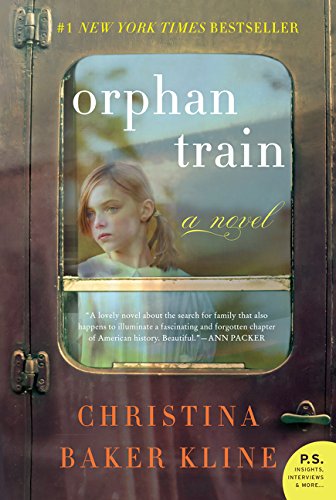I first learned about America’s orphan train riders when I was interning for a literary agency. One of their books was a children’s nonfiction story about a young boy who was sent west on an orphan train in 1926. Since then, I’ve wanted to learn more about this often forgotten piece of history. So, when I found Christina Baker Kline’s acclaimed novel ORPHAN TRAIN, I immediately picked it up and convinced myself I did, in fact, need a new book.
ORPHAN TRAIN is the story of Molly Ayer, a 17-year-old foster child only months away from aging out of the system, and Vivian Daly, a 91-year-old woman who seems to have lived a quiet life on the coast of Maine. In order to avoid being sent to juvenile hall, Molly starts a community service project helping Vivian clean out her attic, and through the project, she learns about Vivian’s turbulent childhood as an orphan train rider.
This novel is told in two alternating timelines, one in present day, and one starting in 1929. The first is the story of Vivian’s life, where she, as a young Irish immigrant, is orphaned in New York City. Children’s services places her on a train going west with hundreds of other children to find a new home. On her journey, she is forced to take on roles meant for someone well beyond her years, such as working long hours sewing for one family and taking care of a depressed, bedridden mother and her many young children.
Vivian’s and Molly’s stories depict the experiences of orphans in two very different eras, and yet their lives still manage to mirror each other. The alternating timelines combine well, as they tell the journeys of two girls searching for family and never truly feeling wanted.
One of the things I loved best about this novel is that it brings to light both forgotten history and underrepresented cultures. Orphan trains brought children from the east to be “re-homed” with families in the west. Though I had never heard about orphan trains in my American history courses, these trains were a significant part of America’s immigrant history in the early 1900s, though, and I was moved by the stories of these displaced children.
The novel offers an intimate look at marginalized people. Vivian in the 1920s and ’30s finds herself persecuted for being Irish and Catholic, and from her memories, we view a bit of the chaotic atmosphere in Ireland during this time. Molly, on the other hand, is a Penobscot Native American, and while she is removed from her culture, her story gives an idea of the countless problems faced by modern-day Native Americans.
ORPHAN TRAIN is an exquisite novel, layered and poignant. While I often remind myself I have enough books to open a library, I’m happy that I convinced myself to buy “just this one more.”








